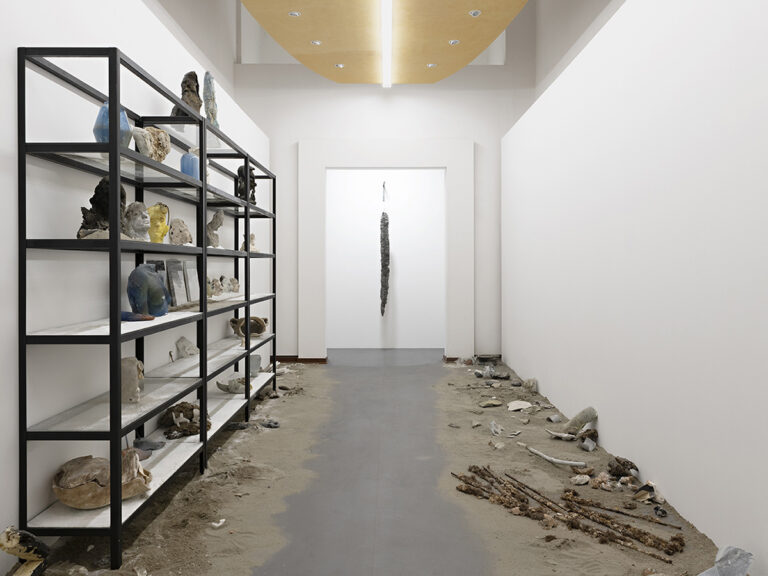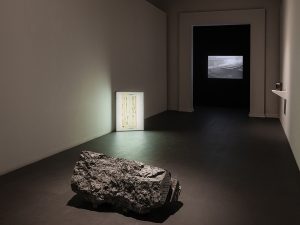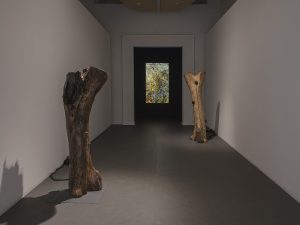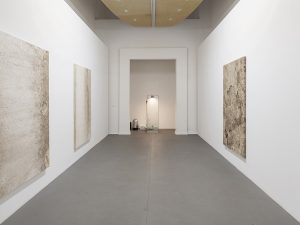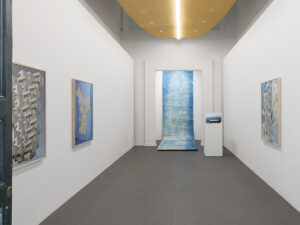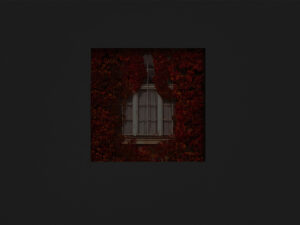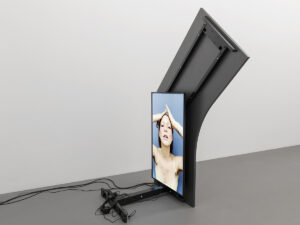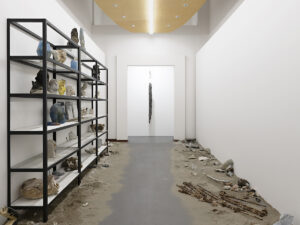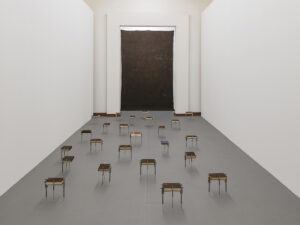Paesaggio is one of the two exhibition cycles of the program Quotidiana at the Museo di Roma- Palazzo Braschi conceived and produced by La Quadriennale di Roma in collaboration with Roma Culture, Rome’s Superintendency for Cultural Heritage. Its aim is to explore a number of significant trends in 21st-century Italian art.
Every two months, six curators (three Italian and three foreign) reflect on artistic trajectories of particular interest through a critical text and an exhibition of a few essential works.
The second exhibition of Paesaggio, from 19 November to 12 January 2023, is dedicated to Alessandro Biggio (Cagliari, 1974) and Antonio Fiorentino (Barletta, 1987).
The exhibition stems from a reflection by curator Alessandra Troncone on a trend in 21 st century ltalian sculpture: some works take on forms similar to those of archaeological finds whose features, instead of referring to a known past, seem to be projected towards a possible future. A sense of ‘end of the future’ is common to many artists and is conscious/y or unconsciously expressed in their projects. lt is deeply rooted in today’s society, in its sense of precariousness.
The artistic research of Alessandro Biggio and Antonio Fiorentino examined in the curator’s criticai essay focuses on the processes of transformation of matter and cultura/ meanings through time. The essay can be read by clicking here.
In Antonio Fiorentino’s Hermetica Hesperimenta (2018), on display in the exhibition, shelves to stare archaeological finds house a series of unfinished works, as if they tao were re/ics, while the debris on the floor refers to objects that have been destroyed and whose memory has been fast.
Alessandro Biggio, on the other hand, presents Cámua (2021), a sculpture made with a cast of the inside of a rotten trunk, a round which a rape is woven, washed in a mixture of water and ash, which is used as a symbolic materiai to evoke the disintegration of the body This work becomes a piace where knowledge of the temporality and rhythm of nature intersects with that of cultura/ traditions, such as the cordula weaving technique used to create the sculpture.
The exhibition venue is the Museo di Roma-Palazzo Braschi (Piazza di San Pantaleo, 10/Piazza Navona, 2). Admission free without reservation. Opening hours: from Tuesday to Sunday 10.00 – 19.00

